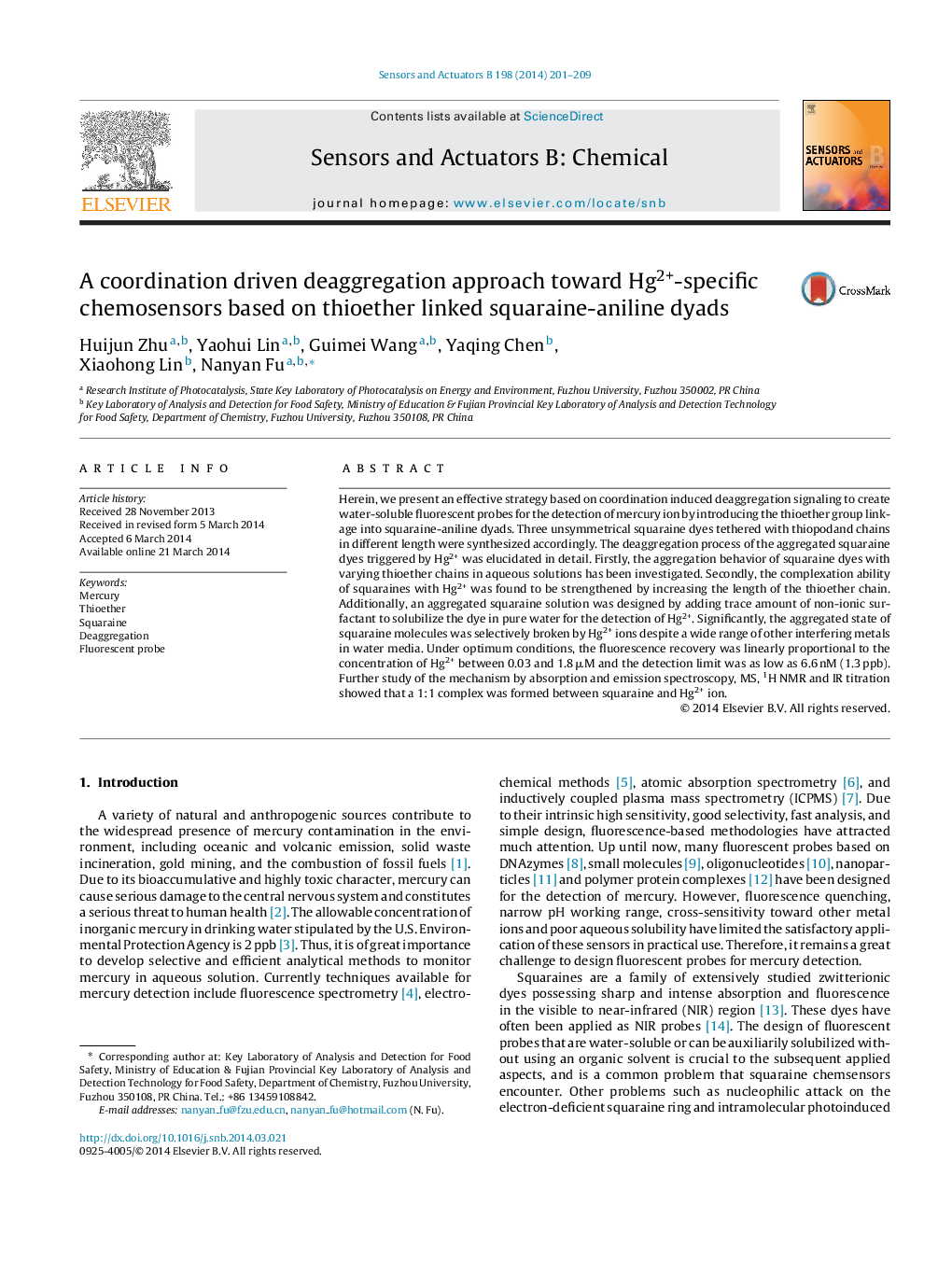| کد مقاله | کد نشریه | سال انتشار | مقاله انگلیسی | نسخه تمام متن |
|---|---|---|---|---|
| 742808 | 1462092 | 2014 | 9 صفحه PDF | دانلود رایگان |

• A series of thioether linked squaraine-aniline dyads were designed and synthesized for the fluorescent detection of Hg2+.
• With the aid of non-ionic surfactant TW-80 the probe exhibited a rapid “turn on” fluorescent response to Hg2+.
• The probe demonstrated high selectivity and sensitivity toward Hg2+ in aqueous media with the LOD of 6.6 nM (3σ/k).
• The probe showed high activity in a quite broad pH range (pH 2–6) and even kept its activity at very low pH.
• The design strategy was based on coordination induced deaggregation signaling, and the mechanism has been discussed.
Herein, we present an effective strategy based on coordination induced deaggregation signaling to create water-soluble fluorescent probes for the detection of mercury ion by introducing the thioether group linkage into squaraine-aniline dyads. Three unsymmetrical squaraine dyes tethered with thiopodand chains in different length were synthesized accordingly. The deaggregation process of the aggregated squaraine dyes triggered by Hg2+ was elucidated in detail. Firstly, the aggregation behavior of squaraine dyes with varying thioether chains in aqueous solutions has been investigated. Secondly, the complexation ability of squaraines with Hg2+ was found to be strengthened by increasing the length of the thioether chain. Additionally, an aggregated squaraine solution was designed by adding trace amount of non-ionic surfactant to solubilize the dye in pure water for the detection of Hg2+. Significantly, the aggregated state of squaraine molecules was selectively broken by Hg2+ ions despite a wide range of other interfering metals in water media. Under optimum conditions, the fluorescence recovery was linearly proportional to the concentration of Hg2+ between 0.03 and 1.8 μM and the detection limit was as low as 6.6 nM (1.3 ppb). Further study of the mechanism by absorption and emission spectroscopy, MS, 1H NMR and IR titration showed that a 1:1 complex was formed between squaraine and Hg2+ ion.
Figure optionsDownload as PowerPoint slide
Journal: Sensors and Actuators B: Chemical - Volume 198, 31 July 2014, Pages 201–209